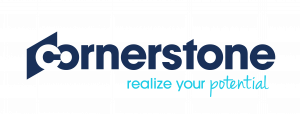This blog post is an excerpt from GovLoop’s recent guide “How to Effectively Communicate Government Workforce Reforms.” In it, we provide an overview of key workforce reforms happening at all levels of government. Download the full guide here.
Today’s government HR professionals face a series of challenges. Confronted with the realities of an aging workforce and the need to onboard a new generation of employees, agencies can’t afford to act inefficiently.
According to a 2017 survey by the Center for State and Local Government Excellence, 91 percent of the HR managers who responded ranked recruiting and retaining qualified personnel as the most pressing issue they face. So, how can these professionals get a better handle on predicting their agencies’ needs? For a growing number of HR departments, the answer lies in cloud-based unified talent management systems. These cloud solutions have become increasingly beneficial to agencies that are maintaining outdated systems.
GovLoop sat down recently with Jim Gill, Vice President, Government, at Cornerstone, which specializes in cloud-based talent management technologies, to discuss this and more.
“Over the last couple of years, we’ve seen an increased demand for modernizing HR solutions and for moving to cloud-based technology,” Gill said. “These solutions help agencies to optimize their recruiting processes by giving hiring managers access to real-time predictive analytics around their talent pools. Agencies that have made the switch are better able to track, manage and report on human capital management and employee training.”
Predictive analytics play a crucial role in these facets of government HR because they provide informed views into the likeliest future outcomes based on historical activities and trends. These advancements are invaluable to agencies and employees alike.
For example, the Securities and Exchange Commission (SEC), is seeing the benefits of a modernized, unified talent management system. By pulling disparate aspects of HR into a single system, the SEC’s HR managers are better able to easily identify both high-potential employees and employee skills gap.
“The SEC has built out the human capital data repository in our enterprise data warehouse (EDW),” said SEC Chief Human Capital Officer Lacey Dingman in a recent interview with FedNewsRadio. “So having that raw data stored in our EDW gives us a lot of leverage and opportunities and options on how we want to continue to modernize and enhance this overall lifecycle talent management system for the agency.”
Technology isn’t the only aspect of public sector HR facing imminent modernization. The size and age of the government workforce are also undergoing major changes.
Compared to the private sector workforce, the public sector is presently made up of a relatively small percentage of millennials — around a quarter, per Bureau of Labor Statistics. However, it’s likely the younger generation will overtake baby boomers as the majority in the coming years.
This shift will present new challenges, including the management of knowledge transfers from seasoned professionals to new employees and the fulfillment of millennials’ vastly different expectations for work and how to get it done.
One of the ways in which agencies can modernize the workplace itself, Gill said, is by adopting a more holistic approach to training and development. Agencies are moving to new platforms that enable them to provide consistent, on-demand, and customized learning content. Those agencies that place more emphasis on continuous learning will find employees more nimble and adaptable as a result.
Cornerstone is helping agencies implement unified talent management systems to cover the entire employee lifecycle, tying learning initiatives to performance, hiring, on-boarding and succession.
“Additional benefits of unified talent management systems are the social dynamic networks they create,” Gill explained. Traditional organizational charts neither reflect the relationships within organizations, nor show how work within those organizations is completed. They also fail to show who has informal or authoritative leadership, he said. Dynamic networks, however, can paint more nuanced pictures of agencies, complete with information about how peers collaborate.
“Technology skills and workforce demographics are shifting and evolving at a rapid pace,” Gill said. “We believe that the new generation will want tools, processes and networks established, so they can get the information they need to be empowered to make decisions, and take charge of their own professional learning.”
To be competitive in today’s world of work, public sector organizations need to identify top talent, capitalize on trends within their workforces and make data-driven decisions to shape their future workforces. It is no longer enough for agencies to simply provide learning management systems to their employees. Instead, government should utilize the workforce data they have to make their agencies a better place to work.






Leave a Reply
You must be logged in to post a comment.